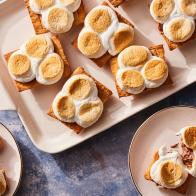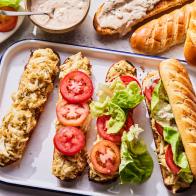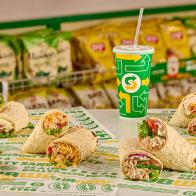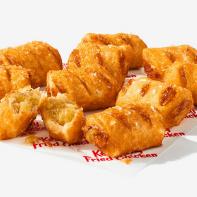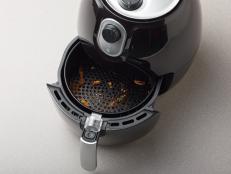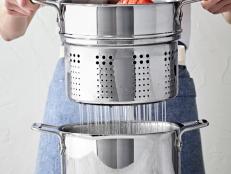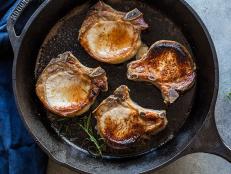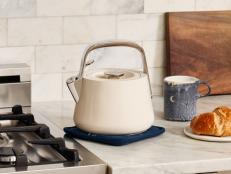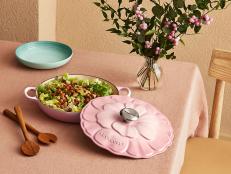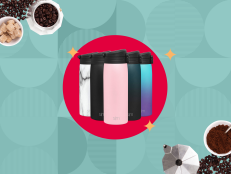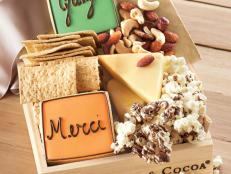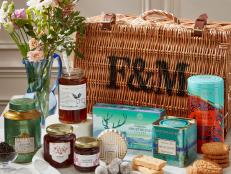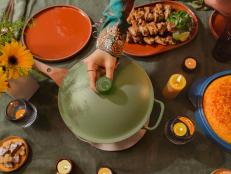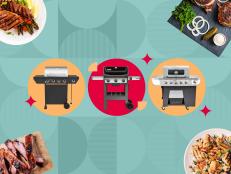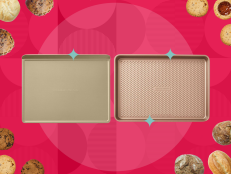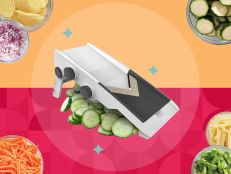Get the Most Out of Your Charcuterie Board with These Expert-Approved Tips
Here’s how to make your next board, the best one yet!

Anna_Shepulova/Getty
Reported by Alice Knisley-Matthias
Edited by Michelle Baricevic
If there’s one food trend that continues to be as popular today as it was the first time it appeared on social media, it’s the charcuterie board. The impressive creations are everywhere these days. In fact, if you were to scroll through your Instagram or TikTok feed right now, we’re confident you’d see at least one charcuterie spread. Though most traditional charcuterie boards contain some mix of deli meats and sliced cheeses on them, dozens of colorful and creative variations now exist. Waffle and pancake-topped breakfast boards have become a weekend brunch staple, while breathtaking dessert boards have started to replace birthday cakes as the go-to treat for celebrations big and small. Though putting together a charcuterie spread may seem pretty straightforward, there’s actually more to it than buying a bunch of things at the grocery store and plopping them on a wooden cutting board. We went to the experts to learn all about the tips and tricks they swear by when putting together their own company-worthy charcuterie spreads. Here’s everything they had to share.

Anna Janecka/Getty
First, Choose A Theme or Color Palette
Like we said earlier, there’s more to charcuterie than simply placing heaps of food on a large plate or platter. In fact, whether you’ve noticed it or not, most successful charcuterie spreads usually have a bigger design, pattern or color scheme about them. “It really all starts with picking a theme for your board. Is this a casual brunch or a dinner party? That idea will help you start thinking about what you want to include,” says Stephanie Miller, a Food Development Specialist for Stonewall Kitchen.
Though you can apply just about any theme to your own charcuterie spread, nailing down a color scheme is a great place to start. “I like to first think about creating a board with a harmonious color palette,” says Katie Webster, chef, food photographer and founder of Healthy Seasonal Recipes.
Whether you choose to focus on two colors or an entire-rainbow full of them (check out @loverboardsoc’s breathtaking spread above for inspiration), having a specific palette in mind will also help you get the most out of your trip to the grocery store. “It’s a good opportunity to go outside your comfort zone and try that ‘strange fruit’ you have been eyeing, or splurge on the ‘more expensive’ cheddar,” Miller advises.
Feel free to use this same creative license when it comes to the color of the items you’re purchasing as well. Buying products that share a similar gradient or shade can be just as successful as purchasing ones that are the same exact color. “I may choose red cherry peppers and chunks of pomegranates, and green olives and rosemary sprigs to add pops of color,” Webster adds. If you want to take your charcuterie board even further, try your hand at a holiday or seasonally-themed design!
Create a New Taste Experience for Your Guests
Color isn’t the only element you can arrange your charcuterie board around. In fact, organizing your board so that you place your cheese and meat offerings next to other foods that’ll complement their overall flavor and eating enjoyment is another surefire way to impress all your guests. “Having a pairing for each of your cheeses really ties a board together, creates a level of purpose for the items you select and also adds a conversation aspect to your creation,” says Sarah Pastula, an expert from Cabot Cheese.
Deliberately laying out your charcuterie offerings in this way is also an effective and thoughtful way to “create contrast,” another key factor Katie Webster believes is needed to make your charcuterie spread top notch. “I always add something sweet, be it fruit, jam, chutney, honey or even chocolate, as well as something sour such as pickles, tapenade or olives,” she says.
Don’t be afraid to take a risk and include some more daring, unexpected combinations to your board too. For example, try pairing sharp cheddar cheese with honey (they actually go really well together) or crumbly goat cheese with a grainy Dijon mustard. Want an even more out-of-the-box pairing? Go for Pastula’s personal favorite: Cabot Pepper Jack cheese and chopped pieces of rich milk chocolate. “That’s a pair that will have your guests talking about new taste experiences!” she says. For even more sweet and savory cheese and chocolate combinations, check out these picks from The Kitchen cast.
When It Comes to Cheese, “Work in Threes”
We can all agree that you can’t have a charcuterie board without some form of cheese on it. But, how much cheese is enough cheese? With so many varieties out there to choose from — blue, hard, soft, pasta filata, processed, semi-hard, semi-soft, fresh and soft-ripened — it can be hard to determine which cheese deserves a coveted spot on your charcuterie board. Whether you consider yourself a big cheese connoisseur or not, limiting yourself to two or three options is a great way to offer your guests a nice range, without overwhelming their taste buds. Trying choosing cheeses that have contrasting flavor notes and textures. Limiting yourself in this way will also save you from spending a small fortune at the deli counter, speciality store or cheesemonger. “My baseline is always ‘cheese in threes’ — a hard cheese, like Parmesan, aged gouda or comet; a soft cheese, like a triple cream brie or goat cheese; and a mild cheese, like cheddar or Emmental,” says food media entrepreneur, Chadwick Boyd.
No matter what cheese varieties you choose to go with, you’ll want to take extra care when it comes to serving it to your guests. While slicing your chosen cheeses into easy-to-grab wedges, slices or cubes is a must, serving them at room temperature — instead of directly from your refrigerator — is just as important. Doing so will not only allow the fats inside your cheeses to loosen up, but it’ll also help bring out the very best flavor and texture in each one of your chosen varieties. Though each cheese is different, pulling yours out of the fridge 20 to 30 minutes before company arrives should do the trick. It’s something Stephanie Miller swears by. “Try to have two to three other different types of cheese on your board and serve them at room temperature in order to get the full experience of your cheese. The different textures and presentation of each cheese will add a level of visual impact to your board,” she says.
To learn more about all the cheeses you can include on your charcuterie board, check out our Ultimate Cheese Guide!
Shop Charcuterie Kits
Related Content:



